Marco Pantani's Mercatone Uno Bianchi Mega Pro XL Reparto Corse was tailor-made for the wispy climber's attacking style and slight build. It epitomises the cycling technology of the day.
The custom-built bike was light, stiff enough and crafted to perfection – and ultimately carried 'Il Pirata' to the top step of the podium in both the Tour de France and Giro d'Italia in 1998, earning a permanent place in cycling history.
Bianchi's Reparto Corse race shop built the custom frame to Pantani's exact specifications, using a lightweight Dedacciai double-butted 7000-series shaped alloy tubeset, a very slightly sloping geometry and a relatively generous head tube to suit the Italian's aggressive in-the-drops climbing style.
Convention was the rule back then, rather than the exception.
The bike features a standard threaded bottom bracket shell, non-integrated 1in head tube, telescoping 27.2mm seat tube and well-proven tube shapes that venture only slightly away from round in select areas.
Aerodynamics were barely even a concern when this bike was raced outside of time trials.
- Icons of Cycling: how Bianchi has maintained the winning habit for 125 years
- More pro bike galleries
Alloy rules the roost



Aluminium was the material of choice throughout for its predictable durability.
The beautifully polished Campagnolo Record drivetrain; dual-pivot brake calipers; the tubular ITM Big One stem; standard-diameter handlebar; and even the Campagnolo Electron tubular wheels are all aloy.
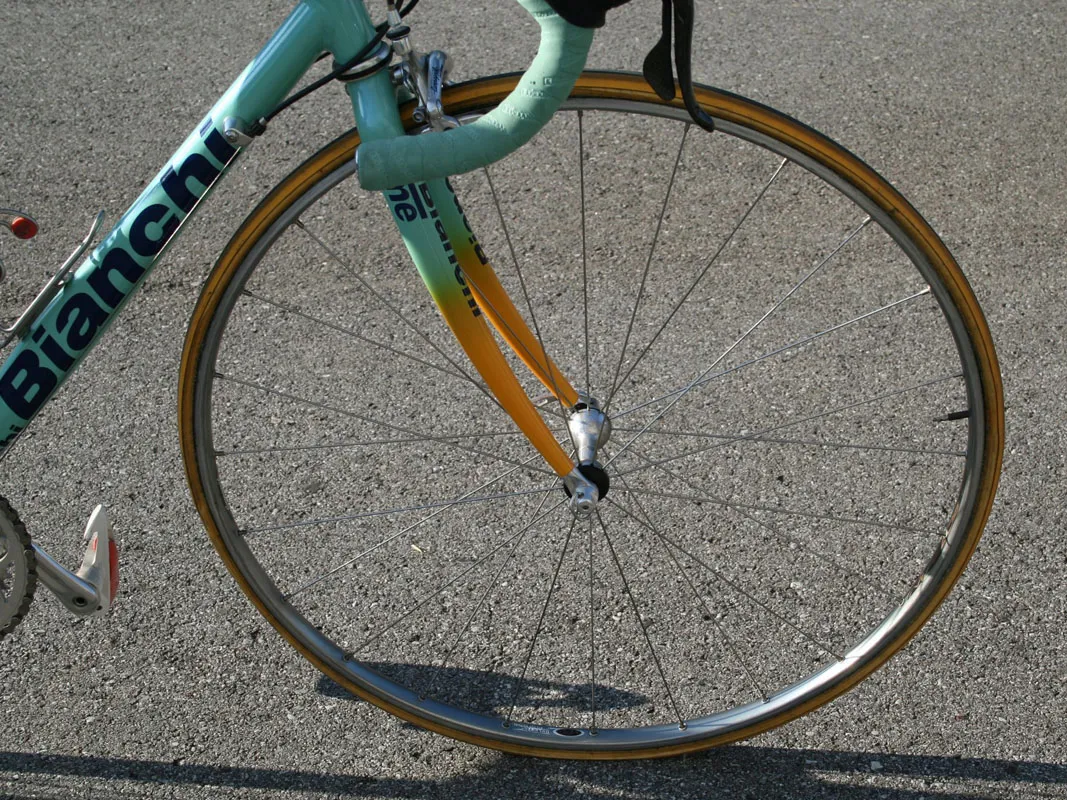

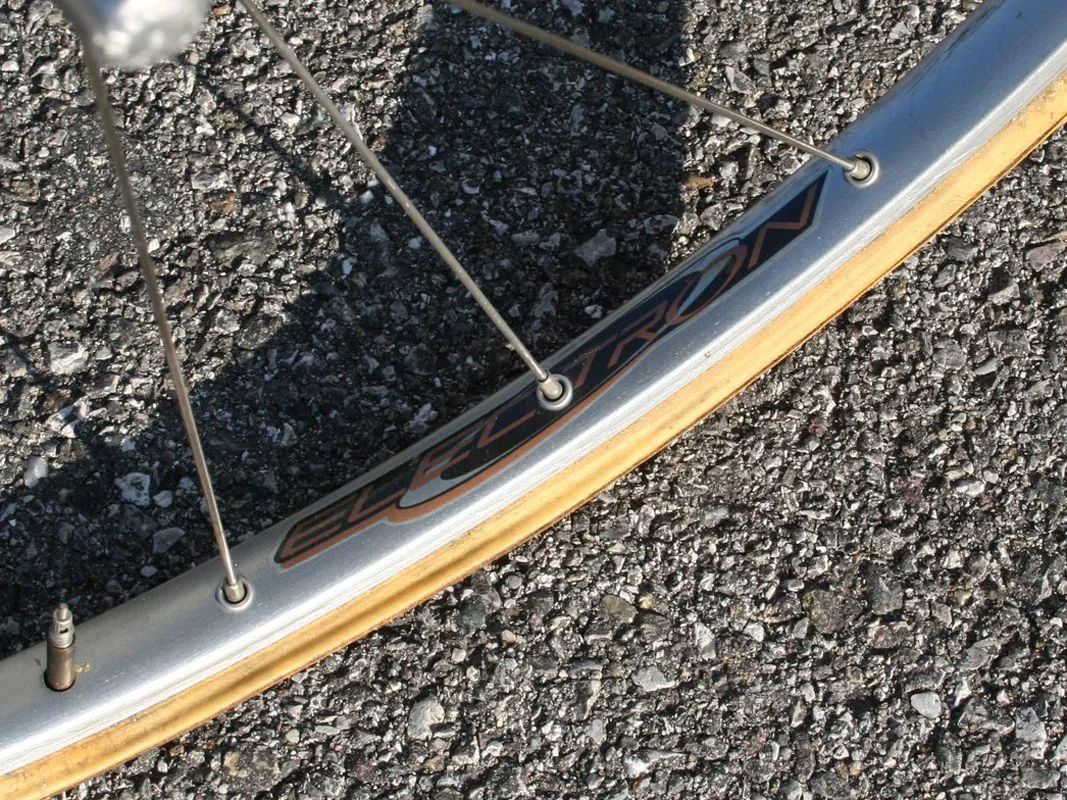
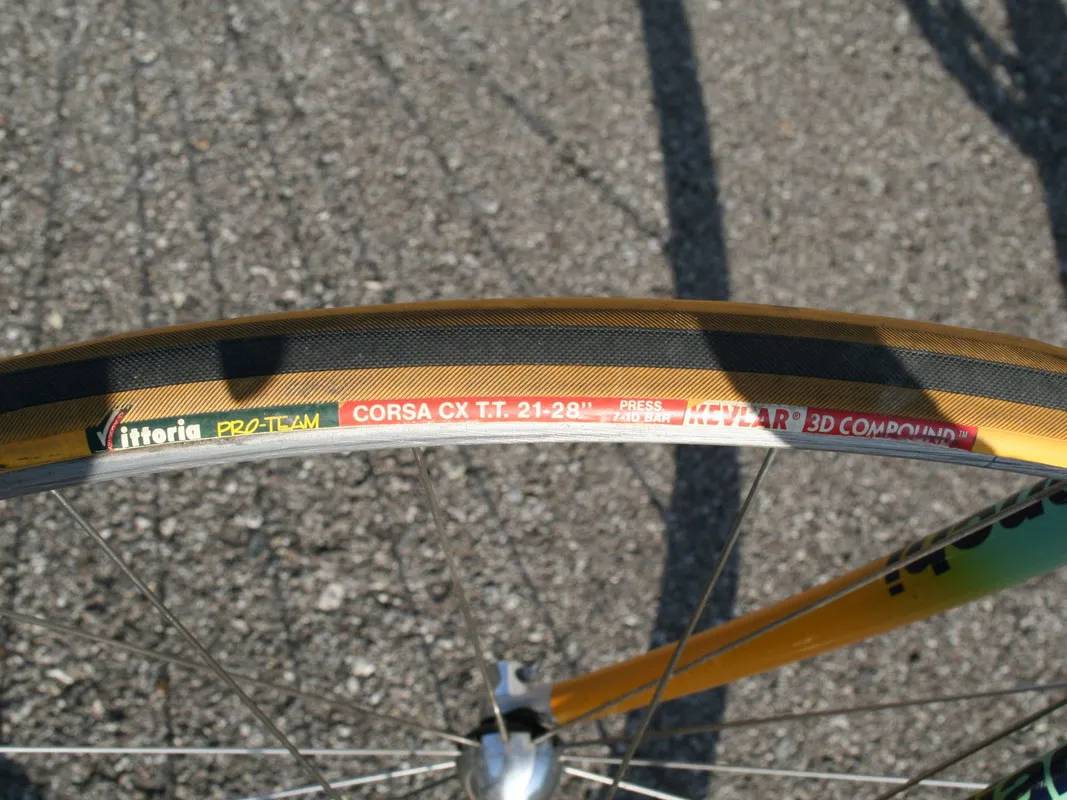
Looking shockingly minimal compared to today's deep-section carbon, the Electron's box-section rims were ideally suited to a rider of Pantani's nature.
They were light, comfortable over the long haul for such a light rider, and they were easily serviceable with grease injection ports front and rear.
Smatterings of exotica
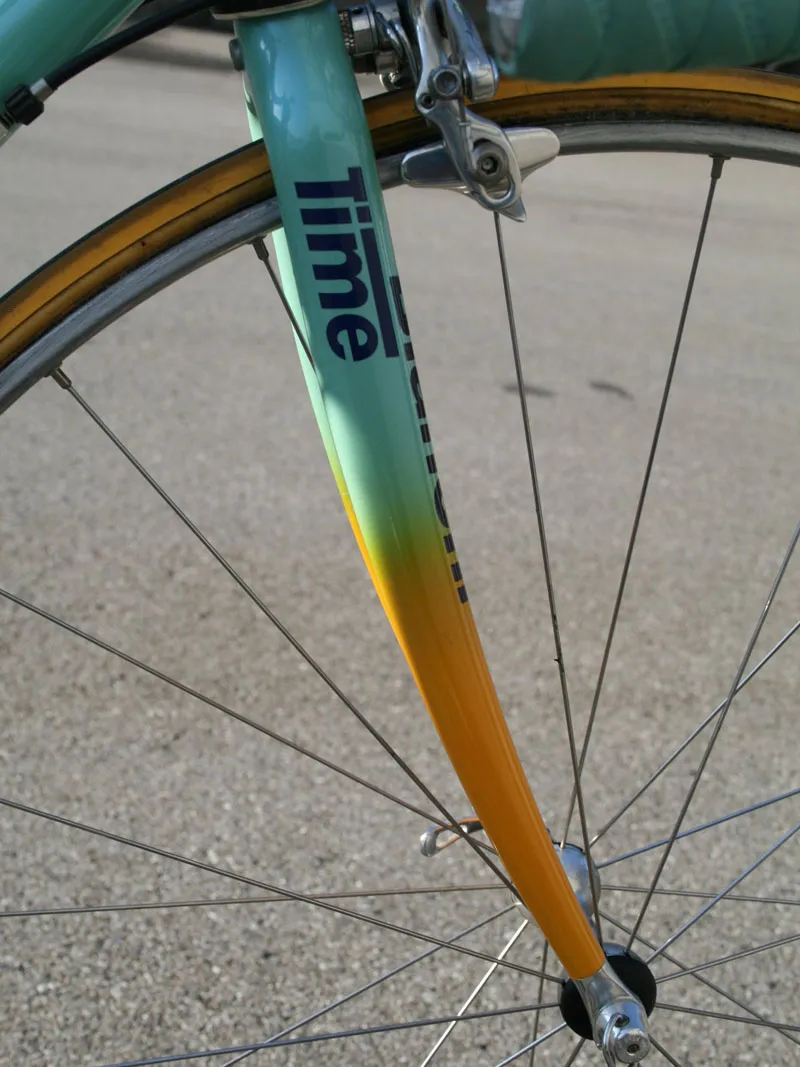

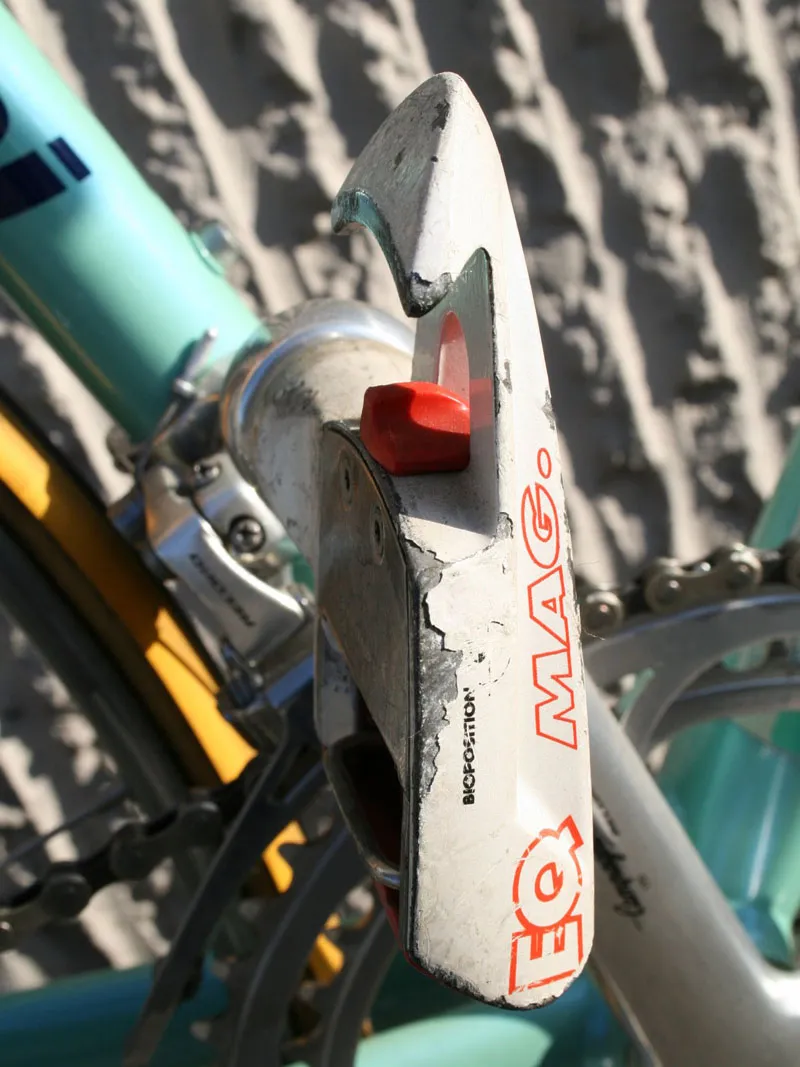
More exotic materials can still be found, though in limited quantities. Carbon fibre was used for the Time fork and nine-speed Record Ergopower levers – although this may have been a post-season change because most race photos from the time show alloy ones.
Elsewhere, the Time Equipe Pro pedals sported magnesium bodies, and titanium was used in the seatpost mast and rear cogs.
Although it wasn't super-stiff compared to today's carbon fibre machines, Pantani's bike was undeniably light, even by modern standards. The total weight was only 6.96kg (15.34lb), including bottle cage and pedals.
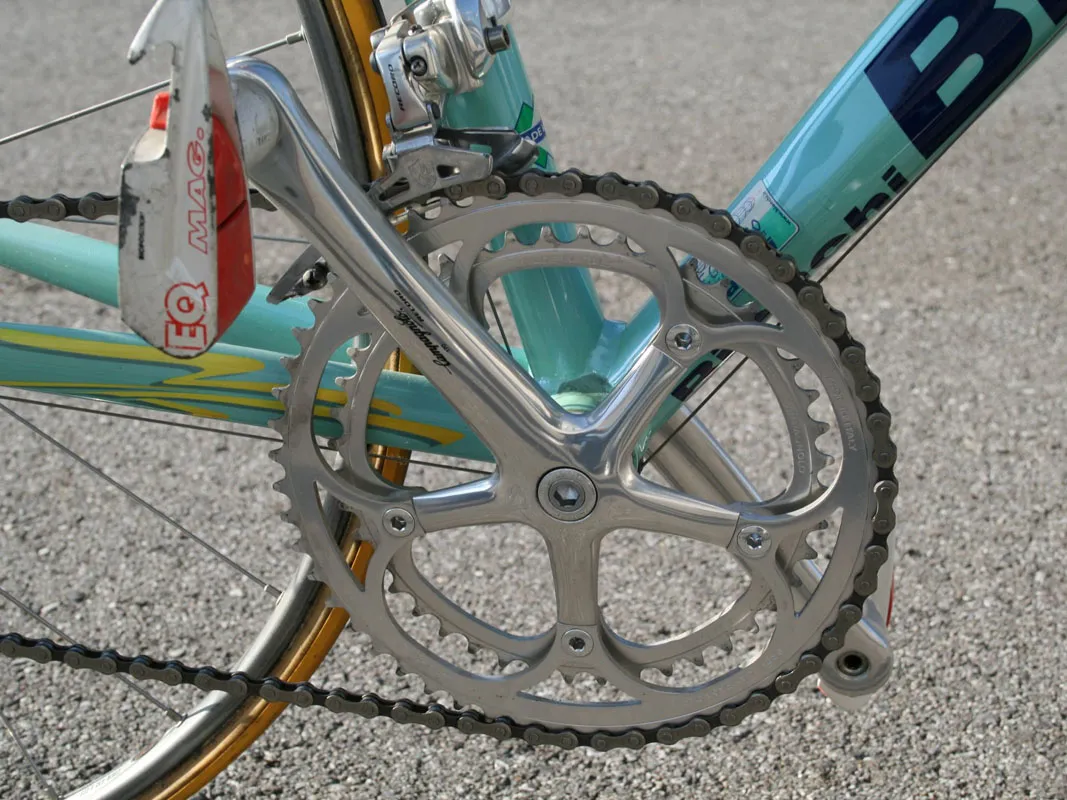
That light weight obviously helped Pantani up the mountain, but the massive gearing he used to do so was somewhat surprising.
The cassette spread is a fairly standard (for the time) 11-23t, but the chainrings measure a comparatively enormous 54/44T – something more commonly found on a time trial bike of the era, but assuming they're period-correct, perhaps still appropriate to Pantani's out-of-the-saddle climbing style.
Throwback customisation
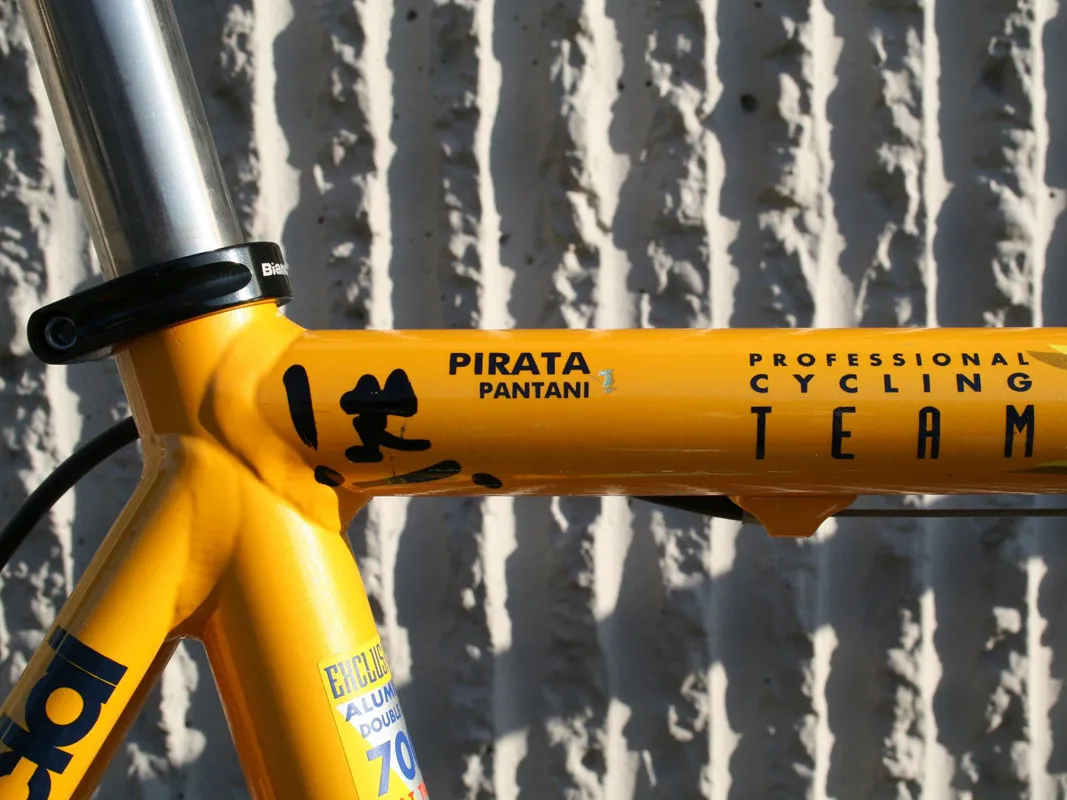
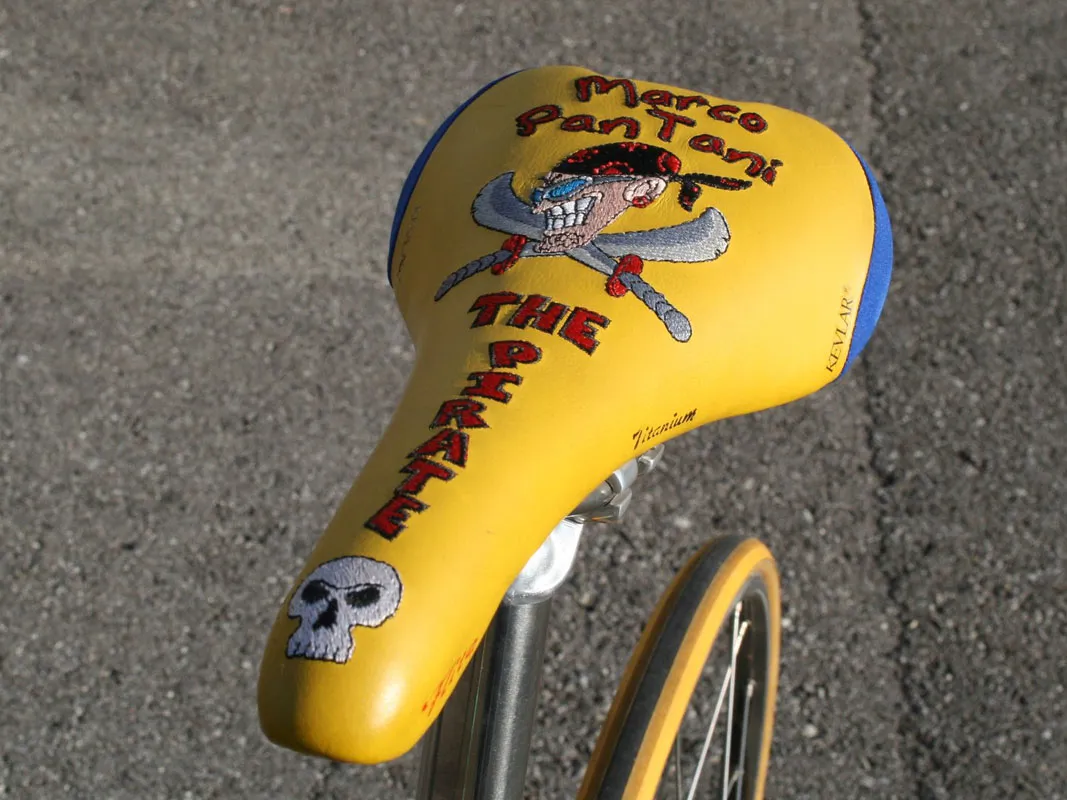
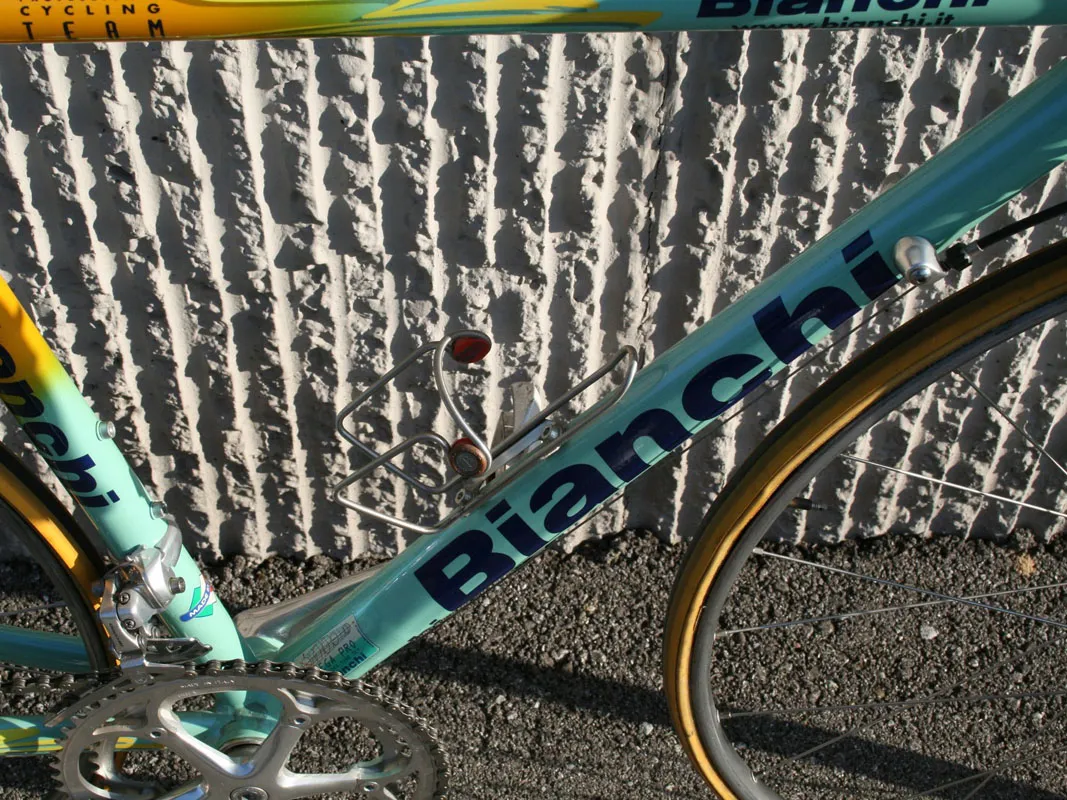
The personalised touches on Pantani's bike were more subdued than those seen in subsequent
There's the usual name on the top tube, but also the custom embroidered Flite saddle from then-sponsor Selle Italia, not to mention the trademark single bottle cage, as opposed to the more common two.

Pantani's life outside of cycling ultimately consumed him in a lonely hotel room in 2004.
Although his career was also clouded with controversy in its later years, legions of fans still prefer to remember him for his emphatic performances on the bike – this bike – and will continue to honour his memory as one of the greatest Italian cyclists of all time.
Complete bike specifications
- Frame: Bianchi Mega Pro XL Reparto Corse, Dedacciai double-butted 7000-series aluminium
- Fork: Time
- Headset: Campagnolo Record
- Stem: ITM 'Big One', 11cm x -11°
- Handlebars: ITM Super Italia Pro 260, 42cm (c-c)
- Tape/grips: Bianchi cork
- Front brake: Campagnolo Record
- Rear brake: Campagnolo Record
- Brake levers: Campagnolo Record
- Front derailleur: Campagnolo Record
- Rear derailleur: Campagnolo Record
- Shift levers: Campagnolo Record Ergopower, nine-speed
- Cassette: Campagnolo Record, 11-23T
- Chain: Campagnolo Record
- Crankset: Campagnolo Record, 170mm, 54/44T
- Bottom bracket: Campagnolo Record
- Pedals: Time Equipe Mag
- Wheelset: Campagnolo Electron tubular
- Front tyre: Vittoria Corsa CX TT tubular, 21mm
- Rear tyre: Vittoria Corsa CX TT tubular, 21mm
- Saddle: Selle Italia Flite, signature edition
- Seatpost: Campagnolo Record titanium
- Bottle cages: Ciussi stainless steel
Critical measurements
- Rider's height: 1.72m (5ft 8in)
- Rider's weight: 57kg (126lb)
- Saddle height, from BB (c-t): 710mm
- Seat tube length, c-t: 505mm
- Seat tube length, c-c: 470mm
- Tip of saddle nose to C of bars (next to stem): 520mm
- Head tube length: 127mm
- Top tube length: 519mm (actual)
- Total bicycle weight: 6.96kg (15.34lb)
Editor's note: this article was originally published in 2010. It has been lightly edited for clarity and timeliness.